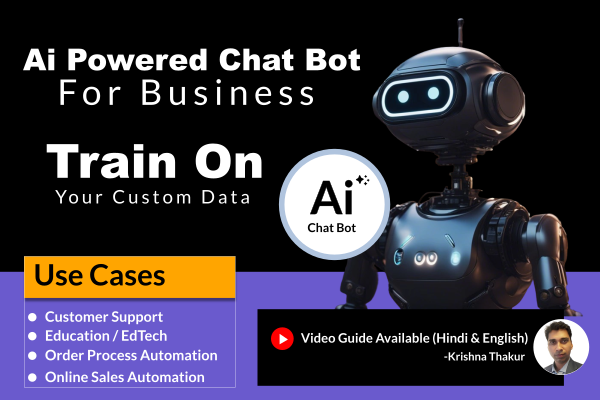The history of artificial intelligence (AI) dates back to ancient civilizations, but the formal study and development of AI as a field of research began in the mid-20th century. Here is an overview of key milestones and contributors in the history of AI:
- Ancient Beginnings:
- The concept of artificial beings with human-like intelligence can be traced back to ancient myths and folklore, such as the ancient Greek myth of Pygmalion and Galatea and the Jewish legend of the Golem.
- Early Mathematical Foundations:
- Mathematicians like George Boole (1815-1864) developed symbolic logic, which laid the groundwork for modern computer science and AI.
- Alan Turing (1912-1954):
- Alan Turing, a British mathematician and computer scientist, is often regarded as one of the founding figures of AI. During World War II, he worked on the Enigma code-breaking project. In 1950, he introduced the “Turing Test,” a concept that assesses a machine’s ability to exhibit human-like intelligence.
- Dartmouth Workshop (1956):
- The term “artificial intelligence” was coined in 1956 at the Dartmouth Workshop, organized by John McCarthy, Marvin Minsky, Nathaniel Rochester, and Claude Shannon. The workshop aimed to explore the potential of creating intelligent machines.
- Early AI Programs:
- In the late 1950s and early 1960s, researchers developed some of the first AI programs. For example, the Logic Theorist, created by Allen Newell and Herbert A. Simon, could prove mathematical theorems.
- John McCarthy (1927-2011):
- John McCarthy is often called the “father of AI.” He developed the LISP programming language, which played a significant role in AI research. He also worked on the development of early AI programs.
- Marvin Minsky (1927-2016) and Seymour Papert (1928-2016):
- Minsky and Papert co-authored the influential book “Perceptrons” in 1969, which discussed the limitations of early neural network models. This book temporarily slowed down research in neural networks until later resurgence.
- AI “Winter” and Resurgence:
- In the 1970s and 1980s, AI faced challenges and a decrease in funding, leading to what was termed the “AI winter.” However, research continued in areas like expert systems, natural language processing, and robotics.
- Expert Systems:
- Expert systems, computer programs designed to mimic the decision-making abilities of human experts, gained popularity in the 1980s and found applications in various industries.
- Neural Networks and Machine Learning:
- In the 1980s and 1990s, neural networks saw a resurgence in popularity, leading to advancements in machine learning. Researchers like Geoffrey Hinton and Yann LeCun made significant contributions.
- Modern AI (2000s and Beyond):
- The 21st century has witnessed remarkable advancements in AI, driven by improved algorithms, increased computational power, and access to massive datasets. Deep learning, reinforcement learning, and AI applications in areas like natural language processing, computer vision, and autonomous systems have become prominent.
- AI in Industry and Everyday Life:
- AI technologies have found applications in industries such as healthcare, finance, autonomous vehicles, recommendation systems, and virtual assistants, impacting many aspects of daily life.

The Factor which propell rapid growth and advancement of AI
- Data Availability: The availability of vast amounts of data, often referred to as “big data,” has been a critical driver of AI progress. With more data, AI algorithms have more information to learn from and can make better predictions and decisions.
- Improved Algorithms: Advances in machine learning algorithms, particularly deep learning, have played a significant role in the recent AI boom. Deep learning techniques, which involve neural networks with many layers, have shown remarkable results in various AI applications, such as image recognition, natural language processing, and speech recognition.
- Increased Computational Power: The growth in computational power, driven by improvements in hardware, including GPUs (Graphics Processing Units) and specialized AI accelerators, has enabled the training of larger and more complex neural networks. This has led to breakthroughs in AI capabilities.
- Cloud Computing: The availability of cloud computing platforms has made it easier for organizations and researchers to access scalable computing resources for AI development and deployment. Cloud providers offer AI-specific services and tools that lower the barrier to entry for AI development.
- Open Source and Collaboration: The open-source nature of many AI frameworks and libraries has fostered collaboration and knowledge sharing within the AI community. This has accelerated the development of AI technologies.
- Research and Investment: Significant investments in AI research and development by both public and private sector organizations have fueled innovation. Tech giants like Google, Facebook, Amazon, and Microsoft, as well as startups and research institutions, have made substantial contributions to the field.
- Integration into Industries: AI has demonstrated its value in various industries, including healthcare, finance, autonomous vehicles, retail, and more. Real-world applications and tangible benefits have driven increased interest and investment.
- Improved Understanding: Researchers and practitioners have gained a deeper understanding of AI models and their capabilities, allowing for more effective development and deployment.
- Regulation and Ethical Concerns: The growing awareness of AI’s potential impact on society has led to increased scrutiny and regulation. This has prompted discussions on responsible AI development and ethical considerations, which have in turn influenced the direction of AI research.
- Education and Talent: A growing number of educational programs and courses in AI and machine learning have produced a skilled workforce, contributing to AI’s expansion.
These factors, among others, have combined to create a fertile environment for AI growth, leading to breakthroughs and applications in various domains and industries. It’s important to note that AI is a rapidly evolving field, and further advancements are expected in the coming years.


Leave a Reply
You must be logged in to post a comment.